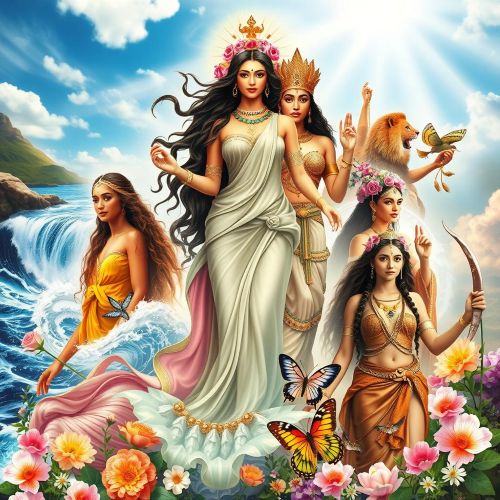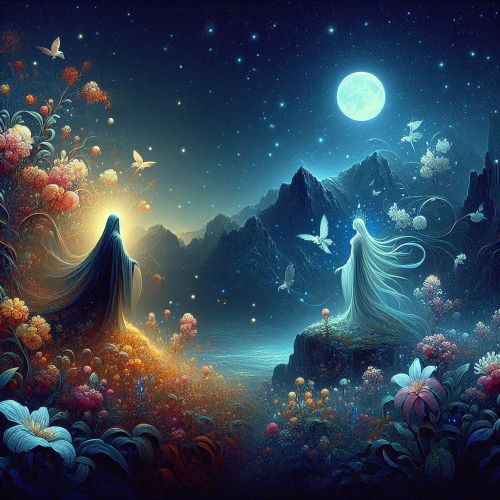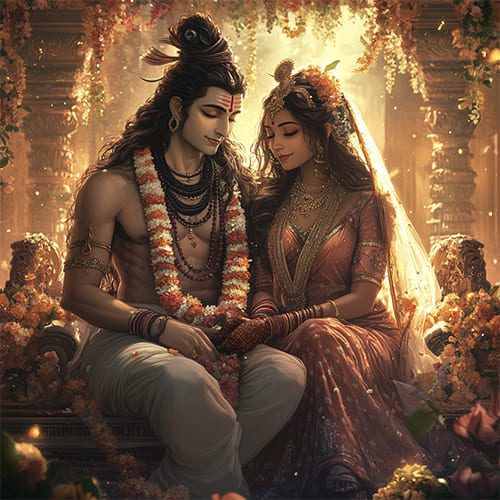8 Goddess of Love from World Mythologies
From the divine whispers of Greek myths to the sacred songs of Hindu scriptures, the goddess of love has been a central figure in many cultures, representing more than mere romance. She embodies passion, beauty, fertility, sensuality, and the creative forces of the universe. Though her name and attributes may vary across regions and time periods, her influence remains timeless. This article takes a global journey through the many gods and goddesses of love found in world mythologies.
Aphrodite – The Greek Enchantress of Desire
No discussion on the goddess of love can begin without Aphrodite, the dazzling Greek deity of love, beauty, and desire. Born from the sea foam and immortalized in countless works of art, Aphrodite held sway over gods and mortals alike. She had numerous lovers, including Ares, the god of war, and is considered the mother of Eros (Cupid). Her Roman counterpart, Venus, shares similar characteristics, and both are seen as divine patrons of sensual love and procreation.
Freyja – The Norse Goddess of Passion and Fertility
In Norse mythology, Freyja is a multifaceted goddess associated with love, beauty, fertility, and even war. She is a member of the Vanir tribe of gods and rides a chariot pulled by cats. Freyja’s magical necklace, Brísingamen, is said to enhance her allure. Despite the often grim backdrop of Norse myths, Freyja brings a fierce but tender representation of femininity and affection.
Rati – The Hindu Goddess of Love and Pleasure
Rati, the consort of Kamadeva (the Hindu god of love), is a divine embodiment of passion and sensual pleasure. Revered in various texts, she is portrayed as an extremely beautiful woman who embodies the essence of erotic delight. After Kamadeva was burned by Shiva’s third eye, Rati pleaded for his revival, highlighting her deep devotion and emotional depth—a side of the goddess of love that goes beyond superficial allure.
Xochiquetzal – The Aztec Deity of Beauty and Desire
Among the Aztecs, Xochiquetzal was worshipped as the goddess of love, fertility, and female sexual power. Her name means “Precious Feather Flower,” symbolizing ephemeral beauty. She was also the patroness of young mothers, prostitutes, and artisans, showing that love and creativity were deeply interconnected in Aztec belief systems.
Oshun – The Yoruba River Goddess of Sweetness and Affection
Oshun is one of the most beloved Orishas (deities) in Yoruba mythology. She governs love, fresh water, fertility, and beauty. Known for her compassion and power, Oshun is also associated with healing and prosperity. She plays a vital role in balancing emotions and is honored in many Afro-Caribbean traditions such as Santería and Candomblé. Oshun is the goddess of love with an irresistibly warm and maternal aura.
Hathor – The Egyptian Guardian of Love and Music
In ancient Egypt, Hathor was revered as the goddess of love, beauty, music, and joy. Often depicted as a cow or a woman with cow horns, she presided over sensual pleasure, maternal care, and the afterlife. Hathor’s temples were centers of music, dance, and worship, reflecting her joyous and abundant nature. She exemplified the divine feminine in every joyful form.
Aine – The Celtic Goddess of Love and Summer
Aine, a lesser-known but powerful Irish goddess, is associated with love, fertility, and the sun. Often linked with midsummer celebrations, Aine had the power to grant and withdraw love, and was known to take human lovers. She embodies both the allure and the danger of romantic entanglement, making her a complex and richly textured goddess of love in Celtic tradition.
Juno – The Roman Goddess of Marriage and Commitment
Though often overshadowed by Venus in matters of sensual love, Juno was the Roman goddess of marriage, loyalty, and childbirth. As the protector of women and the sacred union of partners, Juno’s version of love was rooted in responsibility and commitment. She played a pivotal role in Roman rituals and festivals, especially those related to matrimony.
Modern Reverberations of Ancient Love Deities
These gods and goddesses of love continue to influence our modern interpretations of beauty, romance, and partnership. From the Cupid motifs during Valentine’s Day to Oshun-inspired music in the African diaspora, their presence is still deeply embedded in global cultures. They symbolize more than romantic attraction—they embody emotional connection, feminine power, sexual liberation, and the sacredness of union.
As modern societies continue to explore themes of love and identity, these divine figures offer timeless wisdom. Whether through rituals, art, or storytelling, invoking the goddess of love can serve as a reminder of the powerful, transformative force that love has always been—and still is.
No posts were found.









